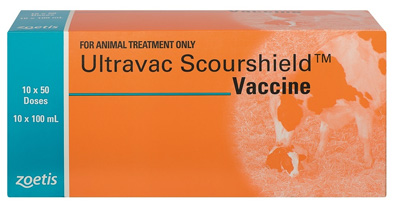References:
1. Marnila & Korhonen. (2002) Immunoglobulins. In: H Roginskin, JW Fuquay and PF. Fox. [Editors] Encyclopedia of Dairy Sciences. Academic Press, London, UK, pp. 1950-1956.
2. Zoetis data on file. (2008) Evaluation of Vaccination to Calving Intervals in Pregnant Heifers Vaccinated with ScourGuard 4K. Protocol #6135R-45-08-181
3. Gunn, A. (2003) Calf Scours in Southern Australia: A review of the impact of calf scours on beef enterprises. Meat and Livestock Australia Project Number AHW.026
4. Perino LJ. A guide to colostrum management in beef cows and calves. Vet Med 1997;92:75–82.









 A Better Way To Buy
A Better Way To Buy